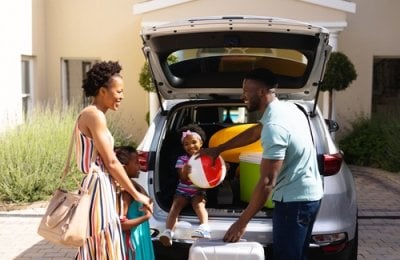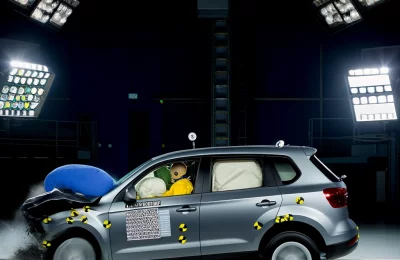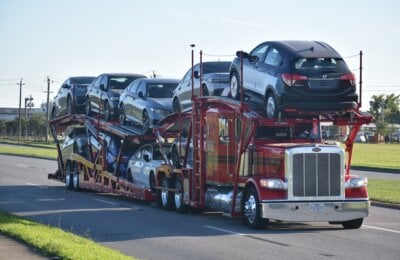
Reading Time: 7 minutes
You have finally found the new car of your dreams, at a price you can afford. The only drawback is that it is in another state. Should you drive or ship your car? What’s the best way to break in your new car?
Even the newer model car manufacturers suggest a ‘run-in’ period, making a long, interstate drive something that is highly discouraged. This post shows you that shipping your car can ultimately save you $$$
Drive or Ship Your Car | Don’t Drive a Brand New Car Very Far
The internet has given us the ability to access shopping opportunities that are not location-bound. Because of this buyers are finding new cars at a dealership in another state. “No problem”, you say, “I’ll just drive it.”

Should you drive or ship your car? The former is not the best way to break in a new car.
Like a new pair of shoes, your new car performs better once it has been run in. Learn the best ways of how to ease your new car’s engine towards its peak performance. We show you how cost-effective it is to ship your new car. This saves it from being improperly driven while being run in. Click here for your no-obligation quote.
For a captivating glimpse into the high-octane world of sports cars and a guide to choosing your dream ride, check out our Sports Car Enthusiast’s Guide. Drive into a realm where speed meets style and discover your perfect match!
Braking News About Breaking in a New Engine
The marriage of new car and engine parts is like the honeymoon of new lovers. Parts begin to set against one another properly as the oil begins to protect and lubricate. Brake pads begin to mate with rotors for smooth, quiet braking. The oil flowing through the vehicle keeps its various seals and gaskets supple and soft.
New vehicles must undergo this ‘wear-in’ process properly. From your owner’s manual, you can find some helpful guidelines. Here are a few simple tips for getting the most out of your new vehicle.
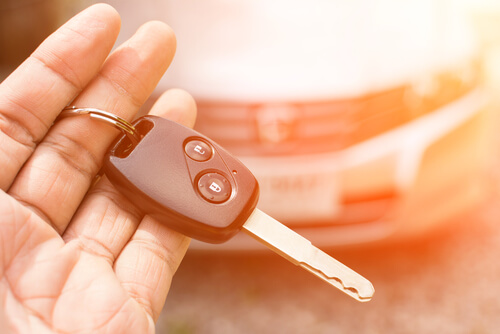
Hard Braking Can Be Heartbreaking—for your new love
When your brake pads are new, the friction material is at its softest. With time and use, your brake shoes get worn down. This can cause the braking system to fail when you have to brake hard, therefore check their condition regularly. Pads and rotors may need to be replaced sooner than anticipated.
It goes without saying, of course, that you should still brake as hard as you can to avoid a collision. For the first more or less 300 miles however, go easy on the brakes. This will facilitate the bed-in of your brake pads and rotors.
Drive or Ship Your Car? Remember, High Revs Could Leave You Paying High Price
Your new car’s owner’s manual suggests that you avoid sudden acceleration and high speeds that puts momentary added strain on a car’s engine… This means no drag racing, drifting, or police pursuits with less than 1000 miles on your odometer—it also suggests that driving your car for a very long distance, on interstate freeways, can be detrimental to breaking in a new engine. And that’s another reason why you should choose the former when faced with the option to drive or ship your car.
It would be a much safer and more logistically friendly choice to ship your new car to your home. When it is delivered to you from hundreds—or even thousands—of miles away, it will still have the same odometer reading as it had when it stood on the showroom floor. Let NAT give you a no obligation quote. [and get 20% OFF!]
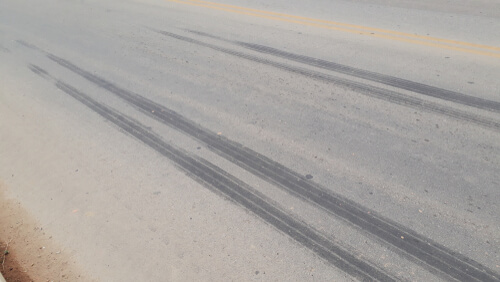
As mentioned, sudden acceleration is bad for a new engine. Try to keep your rpms below 4000 for at least the first 650 miles. The higher your revolutions per minute, the larger the strain and load is on the new engine and individual parts. Driving your car with a light touch and a little less vroom will help the working bits to wear to a perfect fit. Once you’ve put a few hundred miles on the clock, you can put a little lead in your sneaker—where it’s legal of course.
| NAT TIP: During the first few hundred miles, try not to exceed your car’s limits—this goes for the car’s engine, gearbox, brakes, tires, and exceeded load limits |
Low RPM Gear Change: Going Low is Good
By now one thing should be clear to readers of this post: to break in a new car is a process that gives the engine and transmission time to adjust to each other—like Tinder pals— thereby avoiding excessive wear and tear on the gearbox. Switching gears at low revs can also increase fuel economy, so it is good to get in the habit whether you drive or ship your car.
Newer cars feature a gear shift indicator that prompts you to switch gears to maximize your MPG. Within the first 1,000 miles, it can be useful to keep this in mind as an indication of a safe RPM for gear changes.
Shocked and Tired? What About Spring(s) and Brake(s)?
Nationwide Auto Transportation has put together a couple of tips that will show you how to break in a new car. These tips are applicable whether or not you drive or ship your car. To avoid all the stress of not being able to drive your car within the set parameters, here are a few tips to consider during the break-in time:
- It will take around 200 miles for new tires to provide full grip. This is because a release lubricant that is applied in the fabrication process has to be worn away by the road surface. Prevent accidents by adapting your driving style accordingly.
- Likewise, the brakes won’t function properly for the first 300 miles because the discs and pads will have to adjust to one another. So, be careful behind the wheel.
- The shock absorbers and springs will need some time to reach their full effectiveness.
All the above highlight the fact that driving a new car for long distances before the engine has been fully run in, can shorten your car’s lifespan. The intelligent answer would be to ship your car with a reputable car shipping company like Nationwide Auto Transportation. There are a few things to consider when shipping a new car which we will discuss a bit later on.
When you buy a new car, it is every new car owner’s intention to keep their baby in showroom condition for as long as possible. Enter ceramic coatings, the answer to pristine paint prayers.
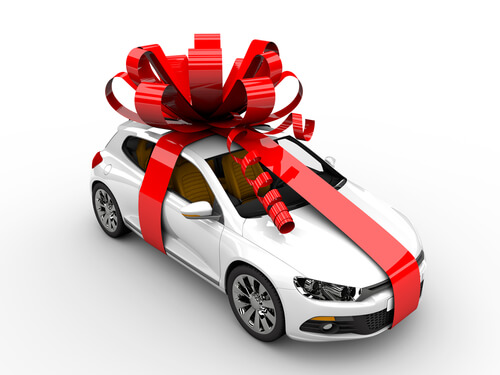
Nano Coat to Keep Your New Car New for Longer
Whether you have bought a new car in your own city, or had it shipped from another state, having it nano- or ceramic-coated, will give your four-wheeled sweetheart a semi-permanent candy-gloss, head-turning finish.
- What is ceramic coating? It is an epoxy, quarts or a hybrid mixture of chemicals that is applied by hand to your car’s paint. The coating bonds with the frame directly and lasts up to ten years.
- Ceramic = Nano—Nano simply means “small”. The smaller the chemical particles used in a mixture, the better the bonding properties they will have with the car’s frame. Ceramic coatings are therefore more durable and long-lasting.
Besides the obvious vanity factor, there are several major benefits to having a ceramic coating on your car’s paint job:
- Providing a layer of protection against light scratches
- Protection from the sun’s UV rays
- Good protection from bad substances like tree sap, bird poop and muck
- Hydrophobicity—When water molecules come into contact with the product, they are repelled and easily slide right off.
Following all of the benefits listed above, you may think a ceramic coating is the next best thing to Jeff Bezos, but obviously not everything is spaceflights and sunshine right. What are the downsides?
- Protects little against major physical harm
- It’s hard to apply yourself
- It can be expensive; but also worth the investment.
Ceramic Coating protects when you Ship or Drive Your Car
There is no doubt that a ceramic coating is good for your car, since it provides light protection and permanent shine.
To apply a ceramic coating properly requires a fairly skilled professional since it has a tendency to deteriorate if not applied correctly. A ceramic spray, on the other hand, has the same benefits as a ceramic coating and can be applied at home, making it ideal for many owners who are on a budget.
When all is said and done, you would like your car to look its best. It isn’t cool to see your wife or girlfriend in an ugly rust bucket, is it?
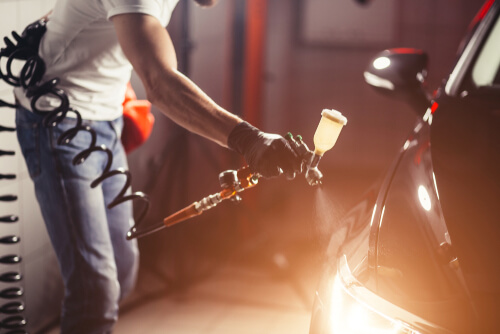
The Verdict: Drive or ship your car?
Why Shipping is Better than Driving a New Car
You have bought and paid for your new car, but you’re not completely convinced that you should not drive it from Atlanta, Georgia to Sacramento, California. Here are a few reasons to help you make your mind up:
- You won’t rack up any miles by shipping your new car. This means it does not devalue just from a trip to get it back home. Miles added to your odometer cannot be turned back (although there are some dodgy dealers everywhere). Shipping instead of driving your car will help you keep the miles off the clock and provide a better driving experience in the long run. It might not be your wallet that thanks you now, but the car will.
- It will save you a lot of time having your car shipped – just calculate the amount of money you can make on a three day trip to drive your new car, not for fun, but just to get it to your garage.
- Stay safe by not driving. With the pandemic nowhere near abating, staying home and local is still the best way to stay safe. By shipping your car you avoid hundreds of possible infection opportunities.
Ship Now – Break in a New Car Later

Your health may ultimately benefit from having your car shipped. In addition to the fact that we’re still trying to get through these pandemic-filled times, driving for so long with your eyes fixed on the road is extremely unhealthy.
There is always the possibility that an accident will occur at any time, and your life is worth far more than shipping the car instead of driving it.
Contact us today for a free no obligation quote and get 20% off your first booking.

